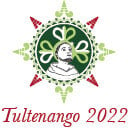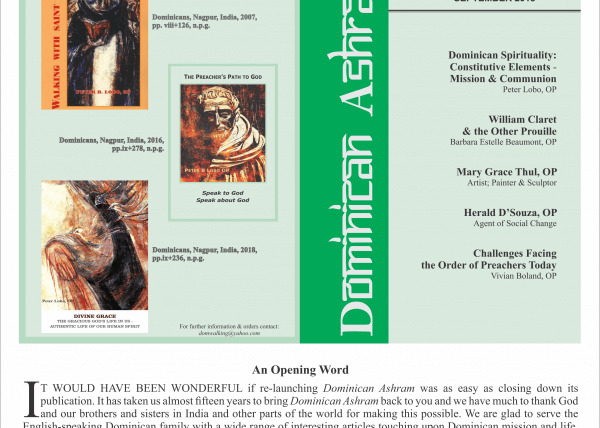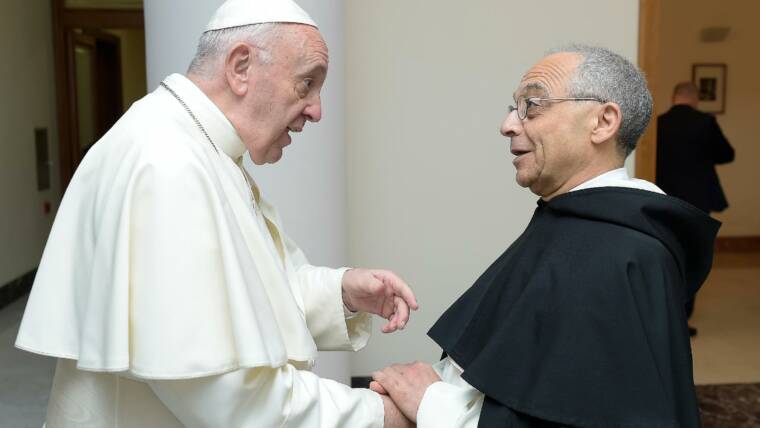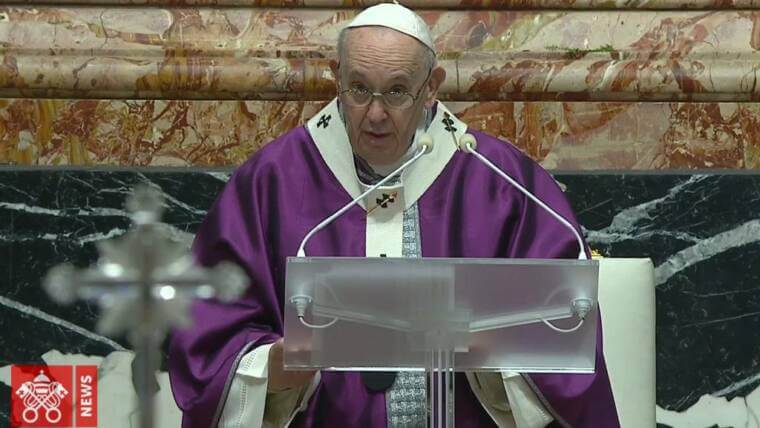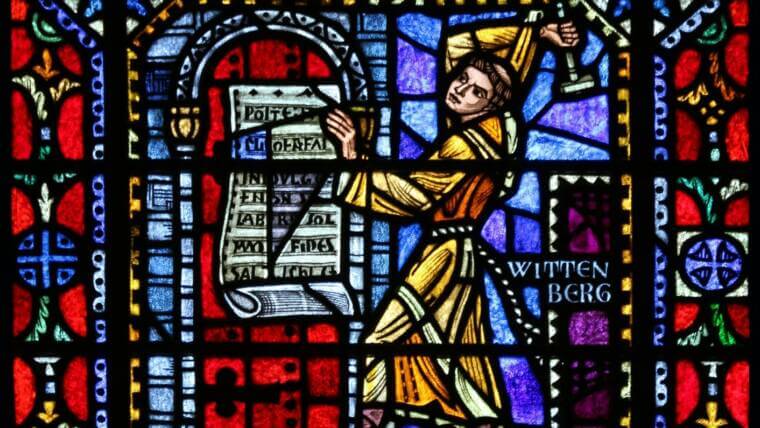
An interview with Sister Valeria Nougués, OP, general coordinator of “Predicarte”
“We are very happy to be able to meet here again with the Dominican Family, preaching through art is what brings us together,” highlights Sr Valeria Nougués, OP, general coordinator of “Predicarte”, in the following interview granted to the Ordo Praedicatorum media.
What are your thoughts on the next “Predicarte”?
We are very happy to be able to meet again in this space of the Dominican Family, where preaching through art is what brings us together. I am very happy that it will be in Brazil, which has the Amazon at its heart, to remind us of the urgency of ecological conversion.
What do we mean today by “art” and thus by “Predicarte”?
Art, or rather the arts in each of their languages, are profoundly human modes of communication. In art, all the dimensions of the person come together, both the person who expresses himself through art and the person who receives and contemplates what art can stir in the depths of his being. We chose to call our meeting “Preaching to You” because, given the centrality of preaching in our Dominican charism. We see art as a way of preaching. It is a way of contemplating the Mystery of God and of all that is human, and a way of proclaiming these mysteries to others.
What have you learned about organization from the previous “Predicarte” gatherings in which you have participated?
Except for the first one which took place in 2002 in Venezuela, I have been in charge of all the other “Predicartes”. We take as our basis the fundamental dimensions of our charism: community, prayer, study, preaching, and adapt them to the cultural and artistic realities of the location of the event. It is essential to work closely with the local team and with the Dominican Family of the country where the meeting takes place. Widespread publicity of the event is of utmost importance in order to reach all corners of the earth. Artists often create works in accordance with the theme of the meeting and so must also be given enough notice so that they have time to do so as well as to organize the trip.
Artists usually have their own source of inspiration. Christian art, on the other hand, seeks to communicateChrist and to preach in a manner relevant to the people of today. How does “Predicarte” respond to this challenge?
Each “Predicarte” has its own theme which lends richness to the event and to the artwork it includes. The theme is chosen taking into account the context of the country that welcomes us and also the contemporary dimensions of our spirituality, especially those we believe will be enlightening for the people who participate as well as for the exchanges that take place during and after the gathering. During “Predicarte”, each artist shares their way of expressing themselves and the context for their own artistic preaching. The exhibition of works is open to all. The artistic show for the performing arts is usually organized in conjunction with the local Dominican Family. When everyone returns to their own place, “Predicarte” continues to bear fruit, and obviously also through the networks.
Can you tell us anything about the situations or the motivations that inspire the artist and about the public to whom their works are addressed?
It’s difficult to answer this question because it depends on each person and their own situation. As I have said, during “Predicarte” we have the space for each artist to share with others what they do, their motivation and their intended audience. Even if an artist has in mind certain intended recipients, art always surpasses the limits of its expected reach. This is part of its value. I don’t know if Blessed Angelico intended that his work would continue to invite us to contemplation and continue to move us in different ways.
Can you single out any current artists?
I follow our brother Félix Hernández Mariano, OP, who has found in abstraction and colour a very contemporary way to reach different audiences with his exquisite sensitivity. Lately he has been publishing short films online about different artists of our family that allow us to get to know them and also to delve into their work.
Would you like to add anything?
If there is one thing that excites me about “Predicarte”, it is that during the meeting, our Dominican charism resonates deeply with each of us, because each event generates community and a shared experience. Our works and time together lead us to prayer and contemplation. We have the opportunity to study in the morning conferences, but also to learn from each other’s way of expressing ourselves and from the techniques we use in the workshops. The focal point of “Predicarte” is our community mural, which is created in every country that hosts us as a lasting testimony of Dominicans making art together and preaching.
Sister Valeria invites you to learn more about “Predicarte” meetings at: https://www.youtube.com/watch?v=Ppkb4L2GsKU. She also reiterates her invitation to the VI Predicarte: “We are waiting in Goiania, Brazil, from 6 to 11 October 2024, for all those who wish to share their art or to experience artistic languages at the service of preaching”.
For more information, please contact the Organising Team:
Local Coordination, Federation of Dominican Sisters of Brazil: Ir. Izide Vecchi: coordinacioncodalc@gmail.com
General Coordinator: Sr. Valeria Nougués: valenou@gmail.com
Registration form: “Predicarte“
We remember some brothers and sisters who throughout history have also preached through art:
§ Saint Thomas Aquinas (1225-1274). Known for his incontestable and timeless theological contributions. In the “Adoro te Devote” one can grasp his profound sensitivity and Eucharistic mysticism from a poetic stance as well.
§ Saint Catherine of Siena (1347-1380). Dictated and wrote her works, which are considered some of the most important in the history of Italian literature. She was the first woman to be proclaimed a Doctor of the Church. She has an extensive collection of letters and prayers. Her greatest work is the “Dialogues”.
§ Fra Angelico (Fra Giovanni da Fiesole, 1395-1455). Italian Renaissance painter, famous for his ability to depict angelic figures and religious scenes with great sensitivity and devotion.
§ Fray Bartolomé de las Casas (1484-1566). Although best known as an advocate for the rights of indigenous peoples in the New World, he was also a skilled writer and chronicler who influenced the way the encounter between Europe and America has been understood.
§ Friar Juan Ricci (1600-1681). Dominican friar and Spanish Baroque painter known for his still-life painting, as well as his portraits of religious figures and saints. Ricci worked in Naples and Rome, and was one of the most prominent followers of Caravaggio’s style in Spain.
§ Fray Tomás de Berlanga (1487-1551). Dominican friar and Spanish explorer who played an important role in the history of art by being the first to describe the Galapagos Islands, which later led to Charles Darwin’s inspiration for his theory of evolution.
§ Fray Guillermo Butler (1879 – 1961) Called the mystic of Argentinean painting for his landscapes, where solitude, silence and stillness are expressed as possible paths to an encounter with God and the revelation of His Mystery. He understood art as a conviction given by the Spirit, externalised as a nostalgia for the infinite, responding to the needs and longings of the society of his time and the modes of expression in accordance with the new languages of modernity.
§ Sister Brigitte Loire (1935 – 2022), a Dominican Sister of the Incarnate Word, her very varied work is a clear expression of her spirituality and commitment to Dominican preaching. The use of colour expresses the light and joy that radiated in her life, the contemplation of the mystery of the incarnation and her love and commitment to humanity.


